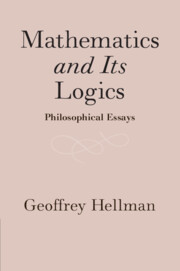Book contents
- Mathematics and Its Logics
- Mathematics and Its Logics
- Copyright page
- Contents
- Acknowledgements
- Introduction
- Part I Structuralism, Extendability, and Nominalism
- Part II Predicative Mathematics and Beyond
- Part III Logics of Mathematics
- 11 Logical Truth by Linguistic Convention
- 12 Never Say “Never”!
- 13 Constructive Mathematics and Quantum Mechanics: Unbounded Operators and the Spectral Theorem
- 14 If “If-Then” Then What?
- 15 Mathematical Pluralism: The Case of Smooth Infinitesimal Analysis
- Index
- References
15 - Mathematical Pluralism: The Case of Smooth Infinitesimal Analysis
from Part III - Logics of Mathematics
Published online by Cambridge University Press: 26 January 2021
- Mathematics and Its Logics
- Mathematics and Its Logics
- Copyright page
- Contents
- Acknowledgements
- Introduction
- Part I Structuralism, Extendability, and Nominalism
- Part II Predicative Mathematics and Beyond
- Part III Logics of Mathematics
- 11 Logical Truth by Linguistic Convention
- 12 Never Say “Never”!
- 13 Constructive Mathematics and Quantum Mechanics: Unbounded Operators and the Spectral Theorem
- 14 If “If-Then” Then What?
- 15 Mathematical Pluralism: The Case of Smooth Infinitesimal Analysis
- Index
- References
Summary
A remarkable twentieth century development in mathematics has been the construction of smooth inifintesimal analysis (SIA) and its extension, synthetic differential geometry (SDG), realizing a non-punctiform conception of continua in contrast with the dominant classical (set-theoretic) conception. Here one is concerned with “smooth worlds” in which all functions (on or between spaces) are continuous and have continuous derivatives of all orders. In this setting, the once discredited notion of “infinitesimal quantity” is admitted and placed on a rigorous footing, reviving intuitive and effective methods in analysis prior to the nineteenth century development of the limit method. The infinitesimals introduced, however – unlike the invertible ones of Robinsonian non-standard analysis – are nilsquare and nilpotent. While they themselves are not provably identical to zero, their squares or higher powers are set equal to 0.
- Type
- Chapter
- Information
- Mathematics and Its LogicsPhilosophical Essays, pp. 256 - 283Publisher: Cambridge University PressPrint publication year: 2021



